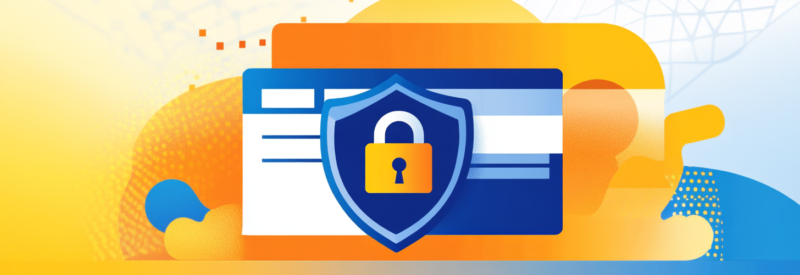Electronic check processing is rising in popularity, but is eCheck safe for your business? As technology changes, so does the way we make payments. Whether it be the trend toward safe online shopping or a push toward contactless payments to avoid germs, customers and merchants alike are looking for alternative payment methods. But as electronic processing continues to grow in popularity, many individuals and businesses have asked the big question: is eCheck secure?
What Is an eCheck?
Before we answer the question of whether eCheck is safe, we must define what exactly it is.
An eCheck is an electronic form of a paper check that’s processed and cleared through the Automated Clearing House (ACH) network. Known for faster clearing times, security, and convenience, individuals and businesses are quickly turning to eChecks to send and receive payments. They offer an extra layer of protection to safeguard finances and ensure payments are cleared successfully without the fear of lost or stolen checks.
How Does eCheck Processing Work?
Electronic check payment processing is more simple than you may think. Let’s think back to the process of a traditional, paper check. A paper check is scanned through an electronic payment system. This system reads the customer’s account and routing number, as well as the amount payable on the check.
In most cases, a physical check is not needed to make the transaction when it comes to eChecks. A customer can also plug their account information into any electronic device when making a payment, this is how the check writer transfers the check to the payee. The payee sends that information to their bank, where the eCheck will clear from the check writer’s bank. Once the check is validated, it’s charged to the check writer’s account. This process ensures the security of the money transfer as well as the customer’s information. Not only is eCheck safe, it’s also a rather simple process.

The 4 Steps to eCheck Processing
Every eCheck transaction follows four specific steps during the process. These steps are similar to the paper check process, but there is no need to physically fill out a physical check. This removes the hassle for both parties involved in the transaction as well as keeping eCheck processing safe.
Step 1: Authorizing the Transaction
Prior to making any payments, the payee must authorize the transaction or recurring transactions. This can be done by signing an order form in person, online, or over the phone.
Step 2: Submitting Online Information
This step is typically complete through an online payment gateway, such as a merchant services provider, Venmo, or PayPal. Here, the payment processing services provider is the middleman of the transaction.
Step 3: The ACH Network
At this point, the information goes to the Automated Clearing House (ACH) network via a business or payment processor. This is where the information will be processed and directed to the appropriate parties.
Step 4: Releasing the Funds
Once the payment clears, the money goes from the check writer, or payer’s bank account into the payee’s (receiver of the payment) account. Payments are usually processed in 3-5 days after the transaction is initiated. However, the clearing time is within 24-48 hours. For security purposes, the cycle may take longer.
What are the Advantages of Using eChecks?
Many individuals and businesses want to know if eCheck is secure. This form of payment is proven safe enough to use online. It lowers fraud risks and has an automatic verification process to ensure funds are available and the payment is secure. Using eChecks offers several benefits for both the sender and the receiver of funds. These benefits include:
- Reduced processing costs. eChecks reduces the cost of mailing and purchasing paper checks.
- It’s an environmentally friendly option. The less paper we use, the more we can help our environment.
- It enhances the customer experience by offering more payment methods. Simple and convenient payment options may result in returning customers and increase sales for your business.
- Reduced fraud risk. Your information is stored in a secure payment gateway and eChecks don’t carry the same risk of fraud or theft as paper checks do.
- Automatic verification. Your eCheck will be sent and verified by the ACH network before it goes into your bank account.
- Safe enough to use online or over the phone. When you make a payment online or over the phone, the eCheck has to be verified by the payee’s bank before it’s deposited into your account.
- Stop payments and reconciliation are still available. Just like paper checks, you can make adjustments as needed to ensure your transaction is safe and accurate.
Is eCheck Safe to Use?

Now that you’re familiar with the purpose behind eChecks, we need to ask if eCheck is secure.
It’s true that eChecks are one of the most secure transactions any individual or business can make. This is because of its authentication process, duplication detection, encryption, and digital signatures. Thanks to these features, eChecks are safe because they offer a level of security paper checks and debit card transactions cannot provide.
Think of it like this, when a customer goes to pay for a service or goods, they must physically keep their credit card on their person. Not only does this open them up to theft, but it also allows for more parties to come in direct contact with their credit card information. Because eChecks utilize electronic processing they do not run the risk of this type of fraud concern. Likewise, eChecks are more secure than physical checks as well. The risk of identity theft and forgery is much lower with eChecks than the traditional check.
Safe, online options
The driving purpose behind secure eCheck processing is convenience for both the merchant and the customer. By offering an online resource for customers to input their banking information directly to the merchant, it eliminates the need for shopping carts, credit card machines, or other card readers. While these methods are not inherently risky, they do come with higher percentages of fraudulent attacks.
This simple, online method of offering payment options to customers is convenient. Not only is eCheck safe but providing the option in this manner often means a quicker and cheaper alternative for you.
Secure recurring revenue
One of the most popular uses for eChecks is recurring revenue. Because the issuer of the eCheck supplies the banking information directly, the customer can be regularly charged with little to no hassle. Not only is this a very secure way to make a payment (supplying sensitive banking information once) but it’s also very convenient for recurring revenue. If you’ve ever set up electronic processing for your rent before, chances are you utilized this kind of processing. Creating recurring payments for customers in this way is both efficient and secure for both parties.
How to Offer Secure eCheck Processing
Is an eCheck secure? Yes, it is. Provide your customers with the convenience of more payment options by offering the security and simplicity that only eChecks can offer. If you think eChecks will benefit your business, a reliable eCheck payment services provider can get you started. Then notify your customers of your new payment option, get set up with a secure payment gateway, and start accepting eChecks. It’s that simple!






